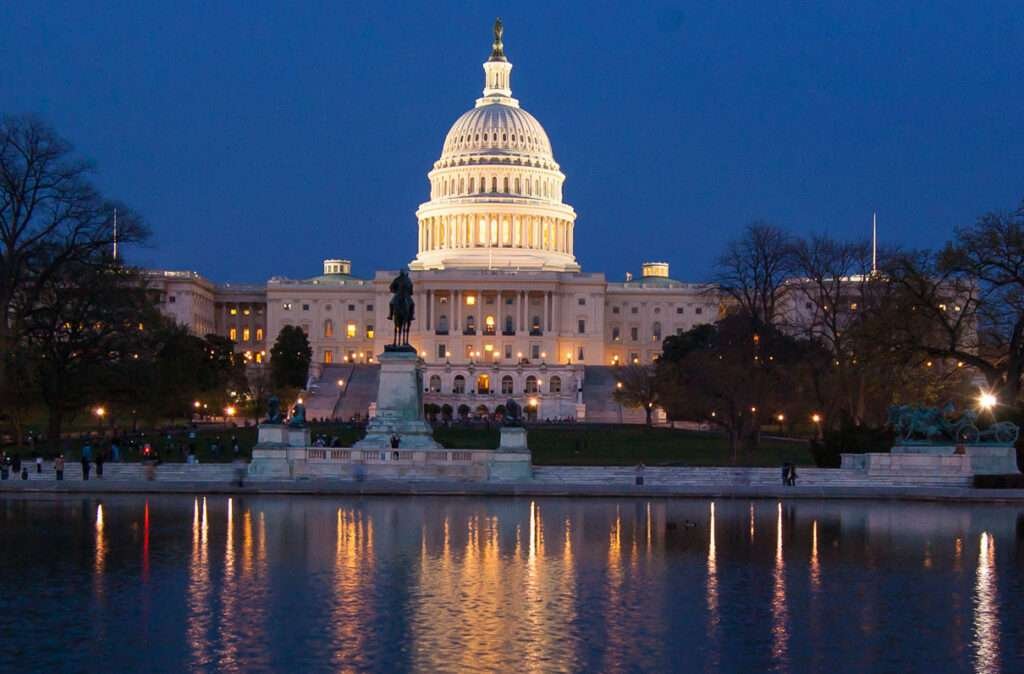
What is a government shutdown?
The term government shutdown is most commonly used in the United States. A government shutdown happens when many nonessential U.S. government offices and services can’t remain open due to a lack of funding.
When Congress does not pass the annual appropriations bills, which they typically complete by October 1 at the beginning of each fiscal year, or the president does not sign them, it causes a lack of financing.
According to the Antideficiency Act and other legislation from the 1970s, federal departments and agencies can’t spend money beyond what’s stipulated in appropriations bills.
If a department or agency does not have a bill authorized by October 1, it must cease all non-essential operations until it passes a bill or a perpetual resolution. A “partial” shutdown will occur if some laws are not implemented in a timely manner while others are.
Why do government shutdowns happen?
In the US, disagreements between political parties over the president’s suggested budgetary levels typically result in government shutdowns. Severe modifications to funding bills, often unrelated to department budget, can also trigger shutdowns.
One significant occasion was the partial government shutdown that started on December 22, 2018. As a result of President Donald Trump’s refusal to sign an appropriations package that would have funded nine federal departments and several agencies. The point of disagreement was the absence of financing for a wall separating the United States and Mexico. Up to January 25, 2019, this shutdown was in place.
Who is affected by a government shutdown?
The staff members of the closed department or agency are the primary victims of a government shutdown. Government employees commonly experience furloughs, or unpaid leaves, and some must work without pay.
Businesses that provide goods or services to federal agencies, government contractors. A few of their employees even declare bankruptcy as a result of the effects.
Across the nation, there are disruptions to government services that affect items like business loan processing, passport issuance, food safety inspections, and park maintenance.
Impact on the Economy:
A government shutdown affects not just federal activities but also those in the private sector, which slow down or cease altogether.
The total economic impact can vary, but the 16-day 2013 closure was estimated to have cost $24 billion in damages.
Federal employees on furlough may reduce their personal expenditures, which could have an overall effect on nearby companies. Businesses that provide supplies for offices to federal agencies, for example, see a decline in sales. During a shutdown, establishments like hotels and restaurants that depend on tourists visiting national parks and monuments suffer losses.
Furthermore, during government shutdowns, banks—despite not being under government control—face difficulties obtaining the data required to complete loan applications. For example, in the loan application procedure, it is necessary to confirm income through tax documents. The costs that banks charge to execute loans have an impact on their earnings, which causes ripples in the economy. In the end, the inability to fund new construction has wider effects on the housing sector overall.
The five-week partial closure in late 2018 and early 2019 was evaluated by the Congressional Budget Office (CBO), which attributed a 0.1% decline in GDP growth in the fourth quarter of 2018 ($3 billion in 2019 dollars) and a 0.2% decrease in the first quarter of 2019 ($8 billion). The principal causes of this were the federal employees on leave losing their salaries. Moreover the federal government delaying expenditure on goods and services.
According to CBO estimates, about $3 billion would not be recovered, even though the majority of the lost real GDP would eventually be recovered. Essentially, the shutdown caused the GDP to be 0.02% less in 2019 than it otherwise would have been. Interestingly, the CBO’s projections did not account for indirect consequences such as challenges firms experience in securing government approvals or federal financing.
How common are government shutdowns?
The United States has gone through 21 government shutdowns between the 1970s and the present, lasting anywhere from one to thirty-four full days. Below are the presidents associated with each of the 10 longest shutdowns, along with the start and conclusion dates:
- November 14–19,1995 (5 days); Bill Clinton
- December 1–9, 1977 (8 days); Jimmy Carter
- November 1–9, 1977 (8 days); Jimmy Carter
- October 1–11, 1976 (10 days); Gerald Ford
- October 1–12, 1979 (11 days); Jimmy Carter
- October 1–13, 1977 (12 days); Jimmy Carter
- October 1–17, 2013 (16 days); Barack Obama
- October 1–18, 1978 (17 days); Jimmy Carter
- December 16, 1995–January 6, 1996 (21days); Bill Clinton
- December 22, 2018–January 25, 2019 (34 days); Donald Trump
How to avoid a government shutdown?
Congress needs to pass all 12 appropriations bills by November 17 in order to prevent a government shutdown. The president must sign these laws once they have been passed by both chambers.
One can implement each law separately or combine them into an omnibus or minibus to accomplish this.
Neither the Senate nor the House are presently debating a second continuing resolution (CR) for FY 2024.
Concerns over adhering to the fiscal responsibility act’s (FRA) expenditure limits and the debt ceiling suspension are the cause of the delay.
Furthermore, disagreements continue to exist about additional funding for foreign security. It includes backing for Israel and further aid to Ukraine, as well as domestic concerns like child care and disaster relief. To obtain comprehensive updates on individual appropriations measures, view “Appropriations Watch: FY 2024.”
More For You:




